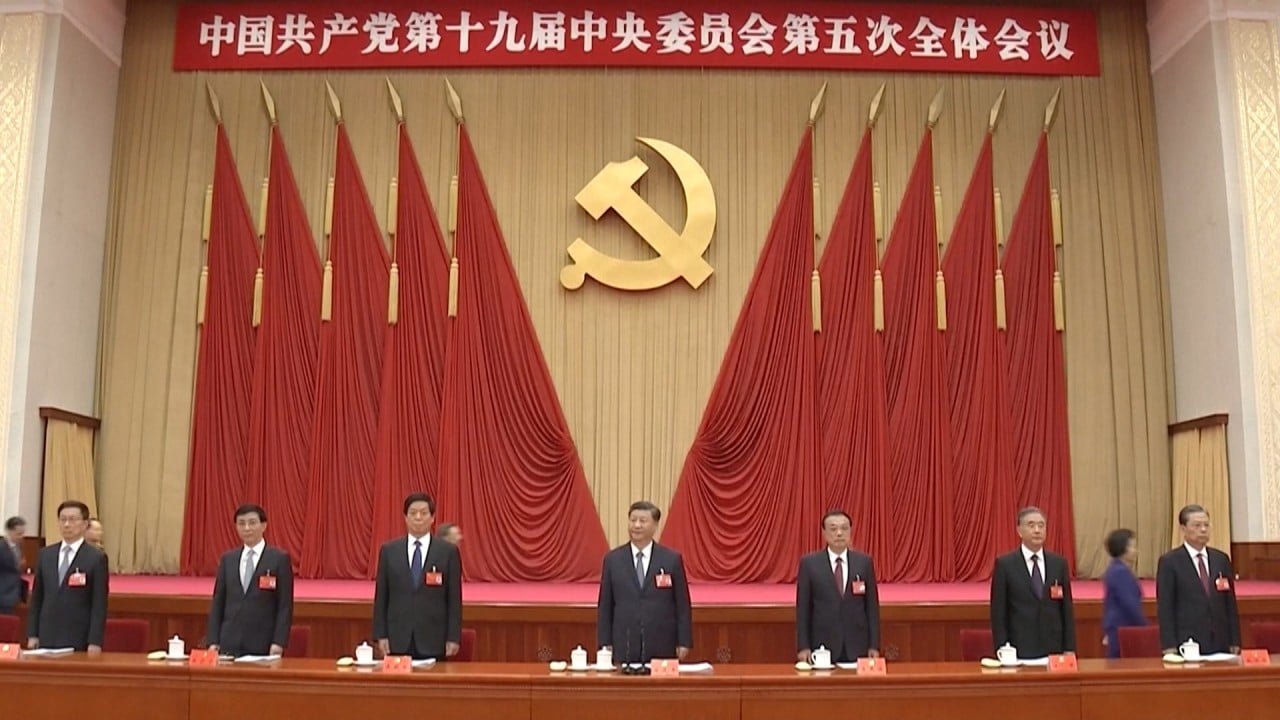
Will China’s self-sufficiency drive raise the risk of a US conflict?
- The economic policy outlined for the next five years keeps focus on model that has been the source of trade tensions with the West, analyst says
- ‘Ideological differences will continue to set Beijing apart from Washington’
These goals would be realised by China’s vast state planning agencies and under the centralised and unified leadership of the party.
Chinese President Xi Jinping signalled the drive for self-reliance and domestic production in an address to senior advisers in April, according to a copy of the speech published in party-affiliated journal Qiushi on Saturday.
Xi said the aim was to ensure the country’s industrial supply chains would not be disrupted even in critical times, with sectors like high-speed rail and power generation needing to be able to withstand foreign boycotts and sanctions.
Coronavirus a stress test for China’s economy, Xi Jinping ‘told Communist Party insiders in April’
But Henry Gao, Dongfang Scholar Chair Professor at the Shanghai Institute of Foreign Trade, said there could be an even greater risk of conflict between the two great powers in trade and technology if China turned inward and self-sufficient.
“The first problem is the modus operandi of such domestic circulation,” Gao said in a note on Friday. “In practise, this means that the Chinese economy will continue to be driven by [the state’s] industrial policy, subsidies and state-owned enterprises – [these are] the troika that has been the staple of China’s state capitalism model and source of major trade conflicts with the West.”
He said that while the party statement repeated the long-held mantra that “the market shall play the decisive role in the allocation of resources”, it also stressed the role of the visible hand of the government over the economy and called for “better synergy between the market and an active government”.
“In view of the increasingly hardened approach that the US has taken against China on these issues, it would not be unreasonable to expect heightened tensions between the two countries,” said Gao, who is also an associate professor of law at Singapore Management University.

03:05
What happened at the Chinese Communist Party’s major policy meeting, the fifth plenum?
Raymond Yeung, chief economist for Greater China at ANZ Bank, agreed that US-China tensions were unlikely to easesoon because China’s leaders firmly believed that “socialist modernisation” was the right path for the country’s long-term development.
“Ideological differences will continue to set China apart from the US, which opposes the idea of party-led, state-run market economics,” Yeung said.
He added that China’s growing economic strength in the next decade would give Beijing even “stronger bargaining position at the negotiation table”.
Julian Evans-Pritchard, senior China economist at Capital Economics, said that if China pursued self-sufficiency and domestic innovation aggressively, it would likely hurt economic growth, with distortions in resource allocation leading to lower overall productivity.
“Since state firms play a central role in industrial policy, the top-down self-sufficiency drive makes it less likely that the leadership will pursue policies which shift resources from state firms to their generally more efficient private sector competitors,” Evans-Pritchard said.
Reformist calls for China to reassure the private sector ahead of key Communist Party meeting
Nevertheless, China’s foreign ministry has sought to ease concerns that the shift would close the door to foreign businesses.
“China will stand firmly on the right side of history and continue to deepen reform, expand opening up, strengthen cooperation in all fields, and work with other countries to win the final victory over the Covid-19 pandemic and promote the recovery of the world economy,” ministry spokesman Wang Wenbin said last week.
James McGregor, chairman for Greater China at APCO Worldwide, said China’s efforts to boost domestic consumption, stimulate domestic innovation, develop home-grown technology, and push for self-sufficiency, could mean that Beijing’s ultimate goal was to eliminate dependence on export earnings and imported technologies.
McGregor said Beijing had similar import substitution aspirations in its 2006 “Indigenous Innovation” strategy and 2015 “Made in China 2025” blueprint.
“Keep in mind that Chinese strategic plans for dealing with the outside world go further back than the Soviet era,” McGregor said. “As you peruse this upcoming 14th five-year plan and its local plans, [you should] remain focused on protecting the long-term future of your global business.”

